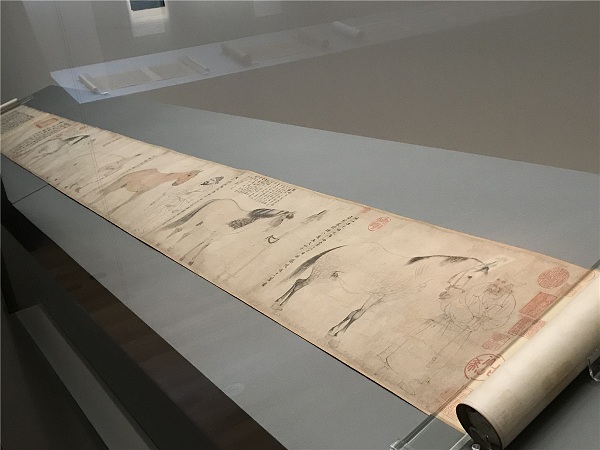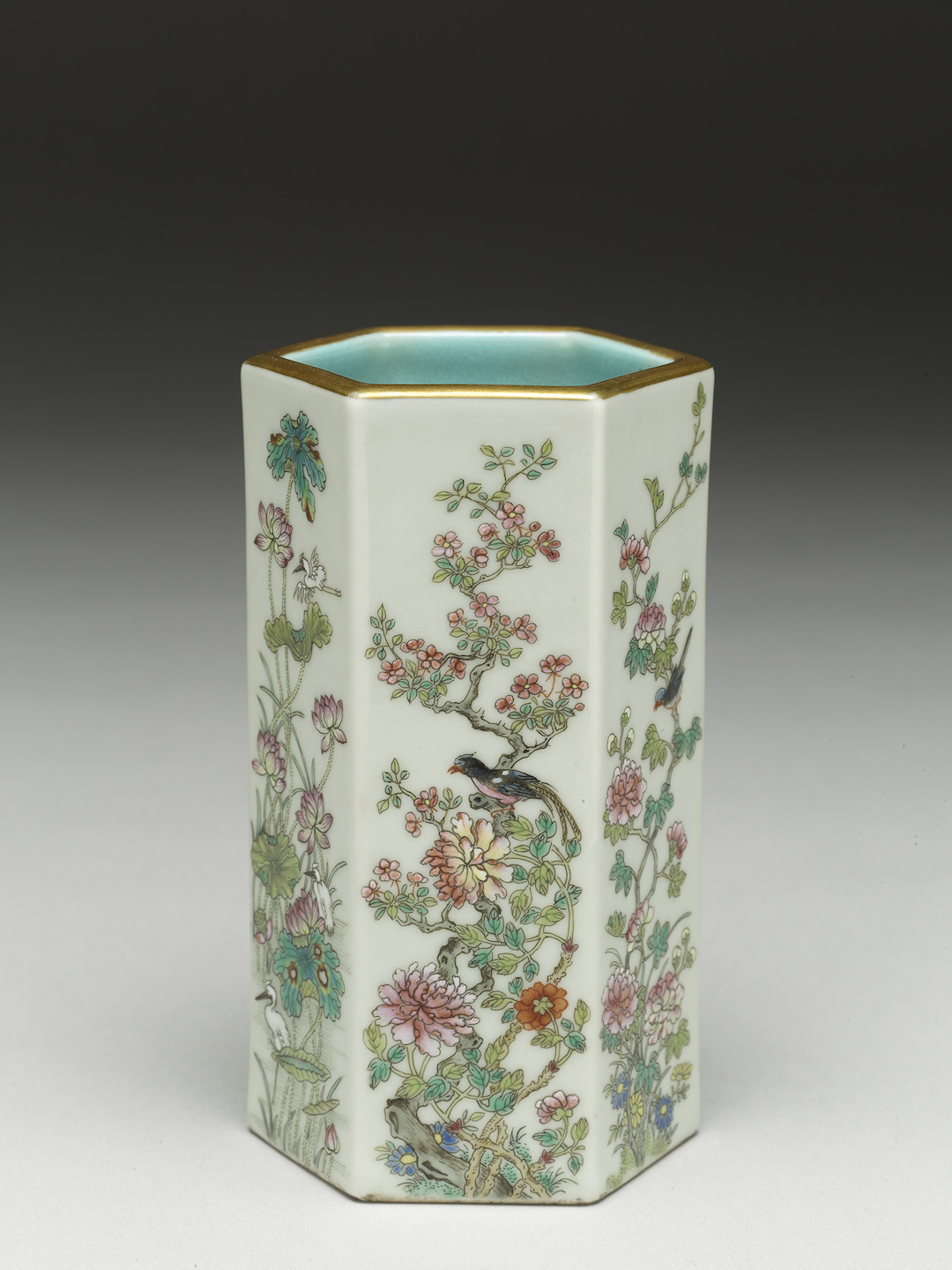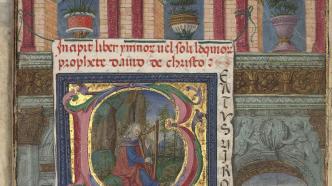
The Pontifical Library of the Vatican is the Pope's collection. It was established in the middle of the fifteenth century. It aims to collect "all Latin and Greek works that can glorify the Pope and the Holy See" and "provide common convenience for intellectuals". It is the oldest library in the world. , One of the most important research libraries, especially the old manuscripts and ancient printed books are the most distinctive, known as the "treasure house of civilization" and "human memory".
The imperial collections of the Ming and Qing dynasties in China, which were comparable to the development period of the Vatican Apostolic Library, are quite impressive in terms of quality and quantity. The Paper learned that the special exhibition of "Treasures of the Vatican Apostolic Library" and "Ming and Qing Court Collection" is being exhibited at the National Palace Museum in Taipei. The similarities and differences between the Holy See and the Chinese royal collection culture were further understood.
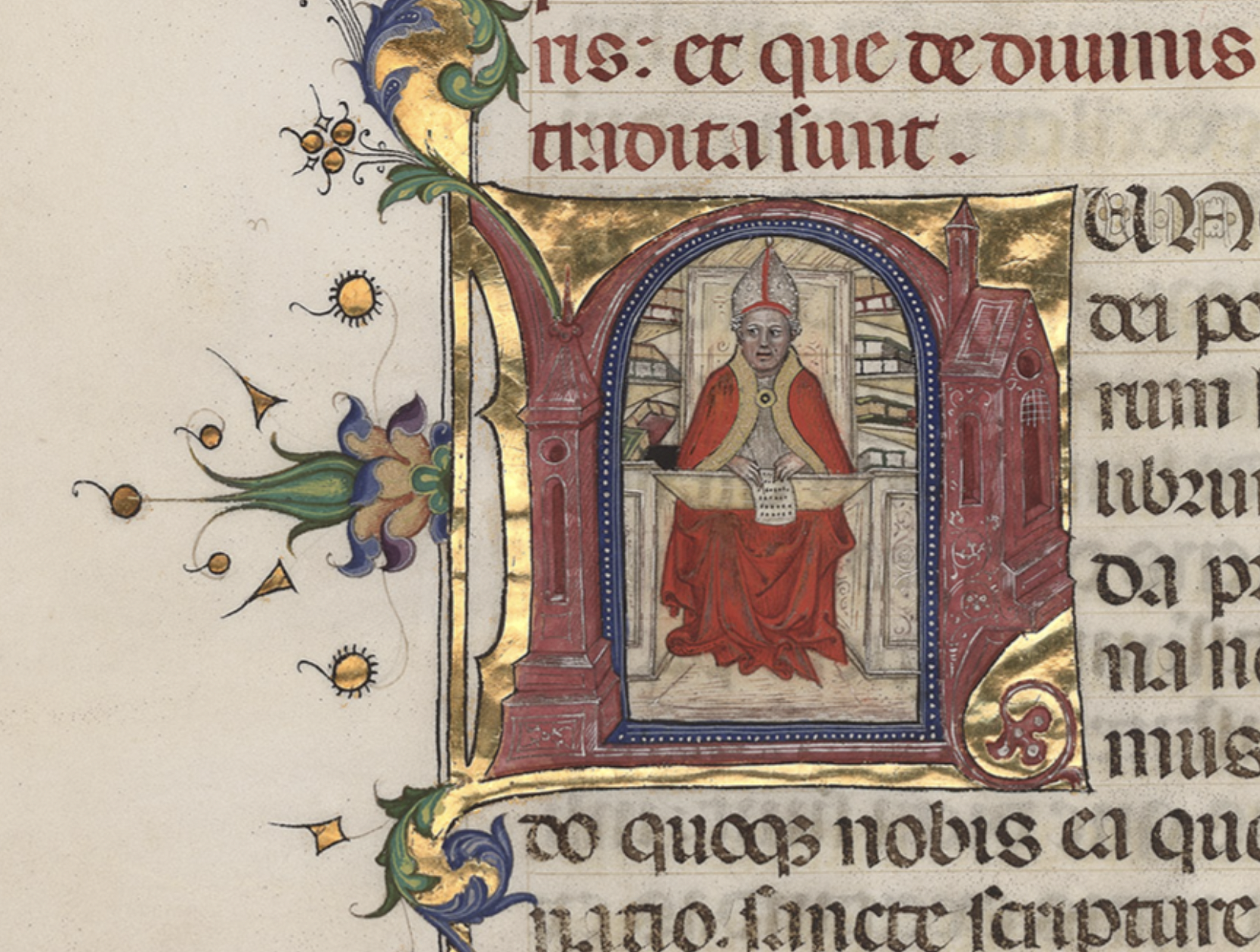
Ambrosian Latin translation of Dionysian theology of the Areopagus (partial) Italian animal skins from the mid-fifteenth century Original display © Apostolic Library of the Vatican
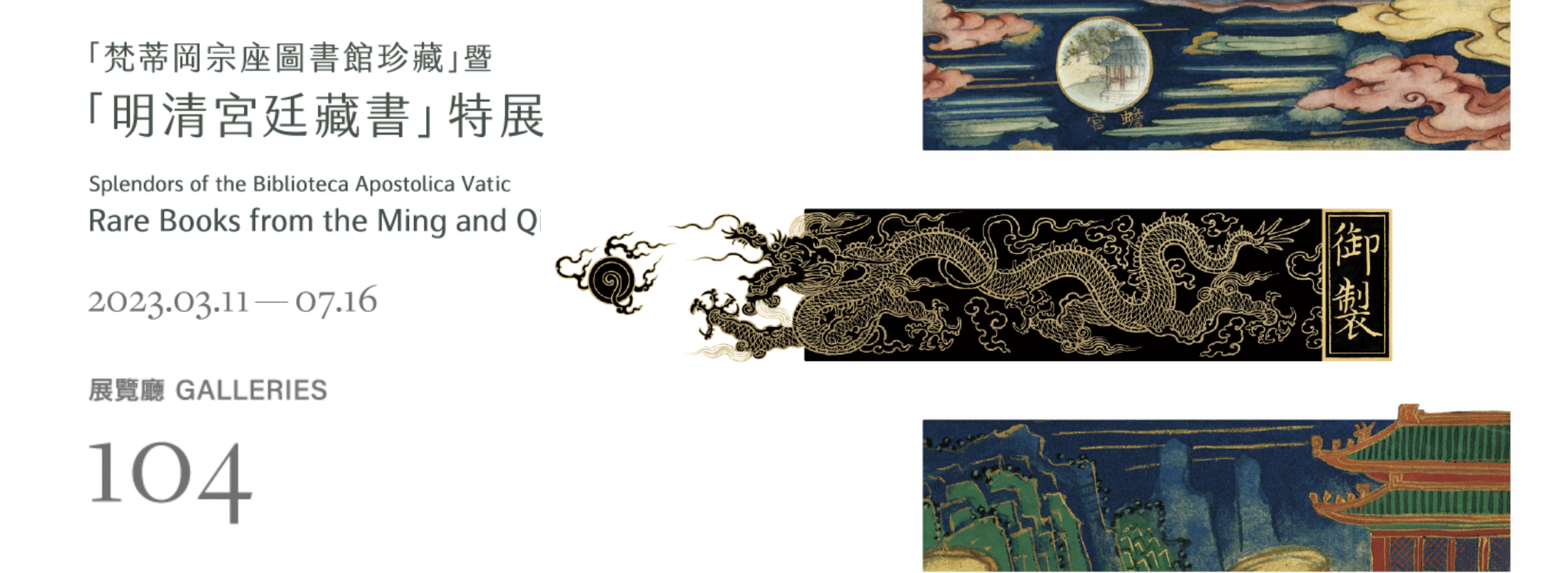
"Treasures of the Pontifical Library of the Vatican" and "Ming and Qing court collections" special exhibition poster
According to the introduction of the National Palace Museum in Taipei, in this special exhibition, the former is in chronological order, drawing on the development of the Vatican Apostolic Library from its inception to the present through the collection of books and cultural relics at various stages; Based on the representative rare books of ancient books collected, edited, and published by the inner courts of the Ming and Qing dynasties, the origin, content, and characteristics of their collections are introduced.
The Vatican Pontifical Library is the Pope's library, located in the Vatican City. The library's collection of books and other valuable documents has been available to scholars for centuries.
At present, the collection of the Pontifical Library of the Vatican includes 80,000 rare old manuscripts, about 100,000 archives, 1,600,000 ancient and modern printed copies (including 8,900 early cradle books before the 16th century), tens of thousands of 16th century and ancient books of the 17th century, as well as 150,000 pieces of graphic materials (including engravings, pictures and copperplate engravings), 150,000 frames of historical photographs, 300,000 coins and medals. This vast collection is the result of five and a half centuries of continuous collection and development of the library, spanning more than 2,500 years and covering many fields of human knowledge: literature and history, art and law, astronomy and mathematics, natural science and medicine, Theology and Philosophy.

Discourse on Orators, Orators, Brutus, Discourse on the Best Orator (detail) Cicero (106 BC - 43 BC) Parchment Original display ⓒ Apostolic Library, Vatican
The Pontifical Library of the Vatican receives thousands of scholars from all over the world every year, and ordinary readers can even browse the digital versions of millions of pages of books and documents online through its digital library.
The start of the Vatican Apostolic Library
With the passage of time, many papal collections that once existed in history have disappeared. Today's Vatican Pontifical Library was established by Pope Nicholas V (Nicholas V, r. 1447-1455) in the middle of the fifteenth century, with the purpose of "providing common convenience for intellectuals". Starting with a small collection, he sent his apostles to all parts of the then known world to collect manuscripts of all kinds according to precise plans, with a view to establishing a universal library covering all disciplines in accordance with humanist cultural standards.
When Nige V died, there were more than 1,200 manuscripts in the collection of the Holy See. His successors can also continue to engage in the research and collection of books. After Pope Sixtus IV (Sixtus IV, r. 1471-1484) succeeded to the throne, he reorganized the library, not only expanding the space, deploying librarians, but also providing stable funding. In 1481, the collection of manuscripts reached 3,500 volumes, making it the library with the largest collection at that time.
Many very important manuscripts were collected during this period, such as the fourth-century Codex Vaticanus (Codex Vaticanus), the oldest surviving and nearly complete Greek Bible manuscript; Romanus) contains the texts of the Latin writer Virgil (Virgil, 70-19 BC). Other important works in the history of literature, such as Terence (Terence, c. 195/185-c. 159? BC), Julius Caesar (Julius Caesar, 100-44 BC), Old Pu Copies of works by Pliny the Elder (23/24-79), Sallust (86-c. 35) and Seneca the Elder (54 BC-AD 39), among others, all at Made in the ninth century.

Ambrosian Latin translation of Dionysian theology of the Areopagus Italian animal skins from the mid-fifteenth century Original display © Apostolic Library of the Vatican
The special feature of this manuscript is that it has the pastoral emblem of Pope Nicholas V (reigned 1447-1455), the founder of the Vatican Pontifical Library, and the annotations and proofs written in his own hand. The codex is regarded as a Latin version of the Greek theological treatises of the late Antiquity Areopagist Dionigi l'Areopagita (c. (Ambrogio Traversari, 1386-1439) edited. Page 138v, in particular, is decorated with gold and colored foliage around it, and in the initial N shows a high priest (or Pope Nicholas V himself), sitting on a chair and writing, surrounded by books.

The Liturgical Book of Pope Bonifitus Latin 1389-1404 on animal skin Image output © Apostolic Library of the Vatican
Richly illustrated and richly illustrated, this volume has long been regarded as a book of episcopal liturgy; or, more precisely, a collection of texts pertaining to the liturgical activities presided over by bishops or popes. On the other hand, some scholars have recently pointed out that the whole book is a "Praeparatio ad Missam", that is, a series of prayer texts used by the Pope for the liturgy of the Holy Sacrament. Pope Boniface IX (reigned 1389-1404) personally commissioned the book, as shown by the pastoral coat of arms seen on several pages, which is also attested by the gold lettering on the fuchsia background surrounding the miniature on page 39v "Sanctissimus dominus noster summus pontifex, Bonifatius nonus fecit fieri hunc librum, ad honorem et gloriam sanctissime Trinitatis, et sui pontificatus)".
The Vatican Pontifical Library during the Renaissance
The Renaissance was a brilliant period of art and cultural development, and the idea of putting people first became more and more mature, which led to the birth of the Vatican Pontifical Library.
The Popes of the Renaissance continued to expand their collections. In addition to Latin and Greek manuscripts, they also began to collect books in Hebrew and other languages. It is worth noting that it is the collection number Vat.Sam.1, which contains the first five scriptures of the Bible, the Pentateuch, and the whole book was written in Hebrew, Aramaic and Arabic in the fourteenth century copied into.
The catalog of the Pontifical Library in the mid-sixteenth century also records many printed copies, which had become common tools for cultural transmission at that time, and are kept side by side with the manuscripts. At that time, Marcello Cervini (1501-1555) was in charge of managing the Apostolic Library. He was also the first head of a cardinal library and was later elected Pope Marcellus II, r. 1555.

History of Rome Livy (59 BC-17 AD) Fifteenth century parchment Original display © Apostolic Library of the Vatican
This magnificent tome was originally written by Archbishop Ludovico of Cosenza. Agnelli (Ludovico Agnelli, 1497-1499), whose pastoral emblem on the front page was later covered by Pope Julius II (reigned 1503-1513). The painting and calligraphy of the whole book are by Baromeo. Della. Gatta (Bartolomeo della Gatta, 1448-1502) was in charge, starting from page 1r of the text, that is, with luxurious drawings: allegorical figures and personifications of the three super virtues of faith, hope and love (Fede, Speranza e Carità) can be seen in the surrounding frame performance, and decorated with festoons, plants and flowers and other elements. Placed at the top of the page is a miniature of eight seated dignitaries, one standing at their side, and gold rings on the ground. This miniature is intended to represent the scene described in the passage (vol. XXIII, section 12) of Livy's work: Hamilcar. Mago Barca (243-203 BC), son of general Hamilcar Barca (275-228 BC), returns to Carthage and announces the victory of the Carthaginian forces at Cannae (p. Second Punic War, 216 BC).
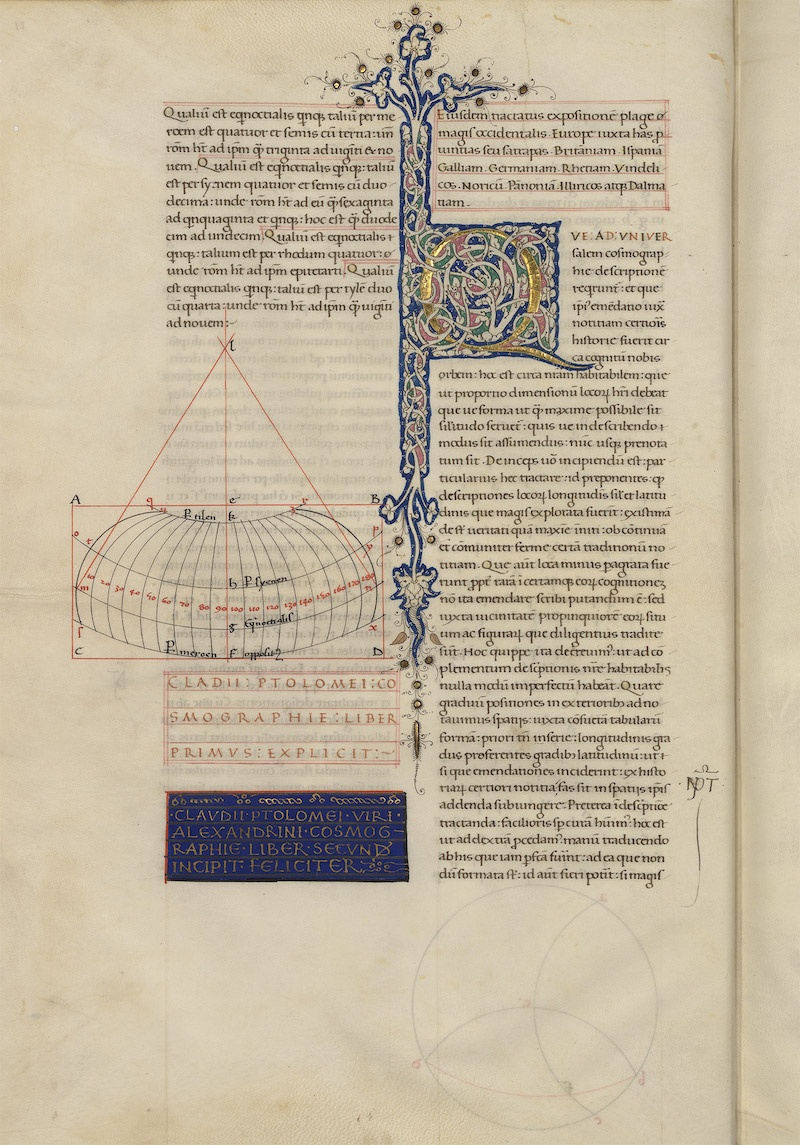
Geography Guide Claudius. Ptolemy (c. 100 - c. 170)
Jacob. Angelo. Da. Latin translation of Scarperia (c. 1360-1410/1411) Fifteenth century parchment Original display © Apostolic Library of the Vatican
This book is Claudius. Ptolemy's Compendium of Geography, by Jacob. Angelo. Da. Scarperia translates to Latin. Medieval cartography provides an abstract and symbolic depiction of the inhabited landmass (Europe, Asia, Africa), sometimes adorned with astonishing figures. The rediscovery of Ptolemy's works enabled Renaissance Europe to use the mathematical method of projection as the basis for a new description of the known world. These mathematical methods reduce the distortion caused by projecting a spherical surface onto a plane. Shown on page 11v is one of the projections proposed by Ptolemy: curved meridians converging upwards with curved parallels (the other two projections are: straight meridians converging upwards with curved parallels, and Earth's distant view).
The construction of the new library site and the collection of books in the seventeenth century
At the end of the sixteenth century, although some buildings were added to the original foundation of the Vatican Apostolic Library, the original space was not enough for use. Pope Sixtus V (Sixtus V, r. 1585-1590) completed the majestic new building during his tenure, which brought the library into a new stage of development and further acquired important collections.
The Vatican Pontifical Library has acquired a large collection of books, and the content of the collection has become increasingly rich. The Heidelberg Palatine Library dedicated to Pope Gregorius XV (Gregorius XV, r. 1621-1623) by Maximilian I, r. 1597-1623, Elector of Bavaria in 1623 (Bibliotheca Palatina) Collection of 2,500 Latin and Greek manuscripts and 5,000 printed volumes, including The Eagle written by Frederick II, r. 1220-1250, Holy Roman Emperor in the thirteenth century Monograph on hunting (collection number Pal.lat.1071).
In 1657, Pope Alexander VII (Alexander VII, r. 1655-1667) purchased about 2,000 exquisite Latin, Greek and Hebrew manuscripts from the old collection of the Dukes of Urbino, including many Masterpieces in the history of art, such as the manuscript of the Bible rich in precious miniatures (collection number Urb.lat.1-2) and the manuscript of Dante's (Dante Alighieri, c. .lat.365).
In 1689, Pope Alexander VIII (Alexander VIII, r. 1689-1691) purchased the collection of 2,300 volumes from the collection of the Swedish Queen Christina Alexandra (r. 1632-1654), who gave up the throne in her early years, moved to Rome, and converted to Catholicism transcript. This batch of books is significant because of their content or artistic connection, the former such as "Sacramentario Gelasiano" with collection number Reg.lat.316, and the latter with collection number Reg.lat.1896 by Sander Dante's Divine Comedy illustrated by Sandro Botticelli (1445-1510).

Secular Poetry Petrarch (1304-1374) 1501 Venice Original display|© Apostolic Library of Vatican
"Pieces of Secular Poetry" is one of the Fondo Aldine collections of the Vatican Pontifical Library. The printed pages and blank pages are interleaved, that is, the printed pages are separated by blank pages and then the whole volume is bound. It contains Italian Friuli (Friuli) ) Humanities scholar Julio. Camelot. Intensive commentary by Giulio Camillo Delminio (1480-1544), dated to the first thirty years of the sixteenth century. Del Minio's notes, which include numerous references and sources, are prominent among contemporary reviews of Petrarch's work. Between 1553 and 1560, some of his notes were published by Gabriel. Giorito. De. Gabriele Giolito de Ferrari (Gabriele Giolito de Ferrari, 1508-1578) was published in Venice as a commentary in several prints of the Anthology.

Iliad Homer Greek and Latin Roman parchments of the fifteenth century Original display © Apostolic Library of Vatican
This is a bilingual version of Homer's Iliad, with the original Greek text on the left half page and an unfinished Latin text on the right half page whose translator is unknown. The Greek text was written by the well-known Cretan scribe John. Rhosos (John Rhosos, ?-1498) wrote it in Rome in May 1477, and the scribe who copied the Latin text was Tolomio from Padua. Sanvito (Bartolomeo Sanvito, active in 1435-1512). Shown here is the pastoral coat of arms of page 1v, for Cardinal Francesco. Possessed by Francesco Gonzaga (1444-1483), whose name is also mentioned in Greek texts by Rossos. Unfinished miniature drawings (like the Latin text) were also at one time inferred to be by the artist and scribe Sanvito, but are now almost certainly attributed to Gaspare. Da. From Gaspare da Padova (active 1466-1487).
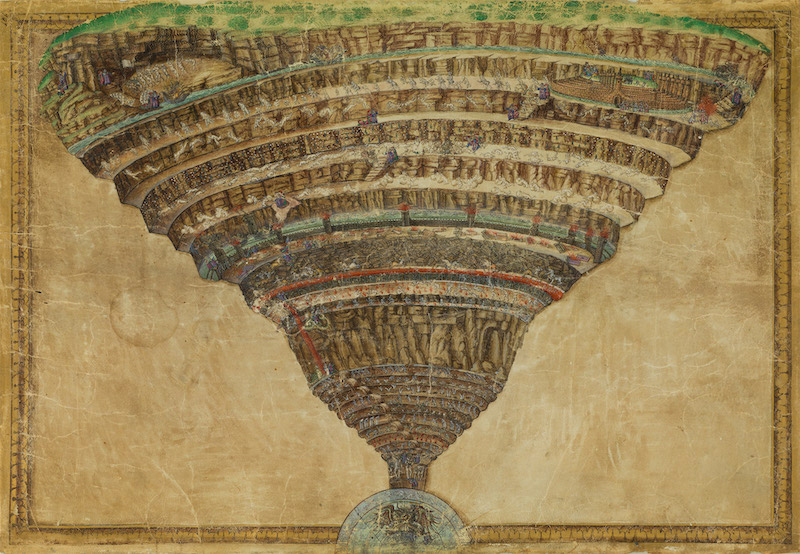
Divine Comedy Dante. Alighieri (c. 1265-1321)
Drawing by Sandro Botticelli (1445-1510) Fifteenth century Video output © Pontifical Library of the Vatican
The manuscript of Dante's "Divine Comedy" was illustrated by Sandro Botticelli, and the period when Botticelli began to draw it coincided with the transition from the classical inspiration to Girolamo. The period of religious reflection advocated by Girolamo Savonarola (1452-1498). In the designer's conception, the form of this book is like a catalog. After each bifold is laid flat, the front can hold the text of an entire chapter. Botticelli's illustrations on the reverse, with the exception of the first, are almost visual annotations. Shown here is the first drawing of the "Inferno" chapter: the front is a map of Dante's journey, which has been completed by the artist, and the back depicts Dante in a dark forest with the ancient Roman poet Virgil (AD 70 BC - 19 BC) encounter scene.

Basil II Saints' Calendar Image output © Pontifical Library of the Vatican
This book contains short biographies of the saints according to the feast days of the saints from September to February of the Byzantine liturgical calendar. The biography of the saint for any day is accompanied by an illustration with a gold background, drawn on the same page. The book was produced in Constantinople by a scribe and eight artists during the reign of Byzantine Emperor Basil II (reigned 976-1025). This book preserves important testimonies and galleries of Byzantine art at the turn of the eleventh century. This precious manuscript was presented to Pope Paul V (Paulus V, reigned 1605-1621) in 1615 and became the treasure of the Vatican Pontifical Library.
eighteenth century collection
In the eighteenth century, there was a wave of collecting ancient cultural relics and artworks in Europe. In this atmosphere, the Pontifical Library of the Vatican also began to collect books, manuscripts, prints and other collections other than traditional collections.
Pope Clement XII (Clement XII, r. 1730-1740) set up the Coin Pavilion (Gabinetto Numismatico) to store coins and medals. It is one of the most important collections of its kind in the world today. The coin and medal room of the Pontifical Library (Medagliere) The head of the core collection. The collection includes Chinese coins of the seventh century BC, Persian, Greek, Roman and Punic coins of the sixth to fourth centuries BC, and various important medals.
Pope Benedict XIV (Benedictus XIV, r. 1740-1758) and Clement XIII (Clemens XIII, r. 1758-1769) established the Museum of Sacred Art (Museo Sacro) and the Museum of Secular Art (Museo Profano) respectively. ), are now incorporated into the Vatican Museums (Musei Vaticani).
Pius VI (Pius VI, r. 1775-1799) opened the Printmaking Studio (Stanza delle Stampe), which has a collection of more than 17,000 printmaking art works, bound into 161 volumes according to the author and theme, forming the Picture Pavilion (Gabinetto della Grafica's "Fondo Antico" currently contains about 150,000 prints, maps, drawings, copperplate engravings, etc.
During the same period, various manuscripts and printed copies continued to be collected in the Pontifical Library, such as the collection of the bibliophile and archaeologist Alessandro Gregorio Capponi (1683-1746), Or the 4,000 manuscripts received by the Ottoboni family.
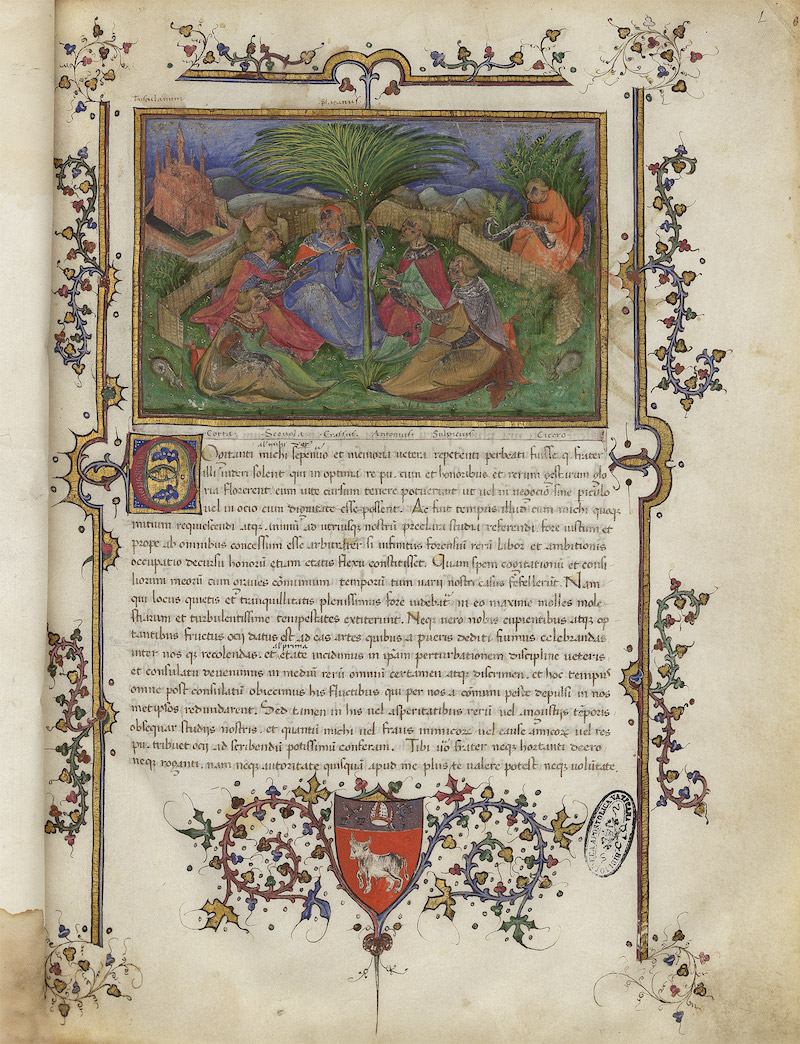
Discourse on Orators, Orators, Brutus, Discourse on the Best Orator Cicero (106 BC - 43 BC) Parchment Original display ⓒ Apostolic Library, Vatican
This magnificent manuscript is one of the most important testimonies of Cicero's rhetorical works. The miniature on page 1r reproduces the background of the work: the main characters in "On the Orator" sit and talk on the grass, surrounded by a slender palm tree (mistakenly planted as a plane tree), whose identity can be identified by the caption : In addition to Cicero, it also includes Gaius. Aurelius. Cotta (Gaius Aurelius Cotta, about 118 BC - 73 BC), Quintas. Moses. Scavola. Skaevola. Pontifex (Quintus Mucius Scaevola Pontifex, 140 BC - 82 BC), Marcus. Li Xini. Crassus (Marcus Licinius Crassus, about 115/112 BC - 53 BC), Gaius. Anthony. Hibrida (Gaius Antonius Hybrida, active in the 1st century BC), Servius. Sulpicius. Rufus (Servius Sulpicius Rufus, c. 106 BC - 43 BC). Cicero is on the outside of the fence, concentrating on taking notes.
nineteenth century
From 1798 to 1799 and 1809, the armies of the First French Republic (French Republic) and Napoleon I (Napoleon Bonaparte, 1769-1821) successively transported some manuscripts of the Pontifical Library of the Vatican and most of the collections of the Gabinetto Numismatico. to Paris; it was not returned until after the Vienna Congress in 1815 (but not all).
At the same time, the collections of many oppressed religious orders became part of the collection of the Apostolic Library of the Vatican, such as the engravings of Leopoldo Cicognara (1767-1834), which occupy a place in the history of art. In the first half of the 19th century, Cardinal Librarian Angelo Mai (Angelo Mai, 1782-1854) applied chemical technology to engage in palimpsest (scraping and cleaning the text on paper and re-copying it with other texts) research, which led to the discovery of the deleted texts, which made the Pontifical Library famous.
During the tenure of Pope Leo XIII (Leo XIII, r. 1878-1903) at the end of the nineteenth century, the foresight of the Jesuit curator Franz Ehrle (1845-1934) drove the Pontifical Library modern development. He expanded the library space, set up a restoration laboratory, started academic publishing, and restored the collection to growth.
In 1891, the Apostolic Library purchased the Borghese family collection, which contained many manuscripts collected by the Pope in the Avignon (Avignon) Holy See period, and the Neophite ( Neofiti) Collection. Soon, the collection of books in the Sistine Chapel (Cappella Sistina) was also recruited to the library, and the documents collected were of great significance in the history of Western music.
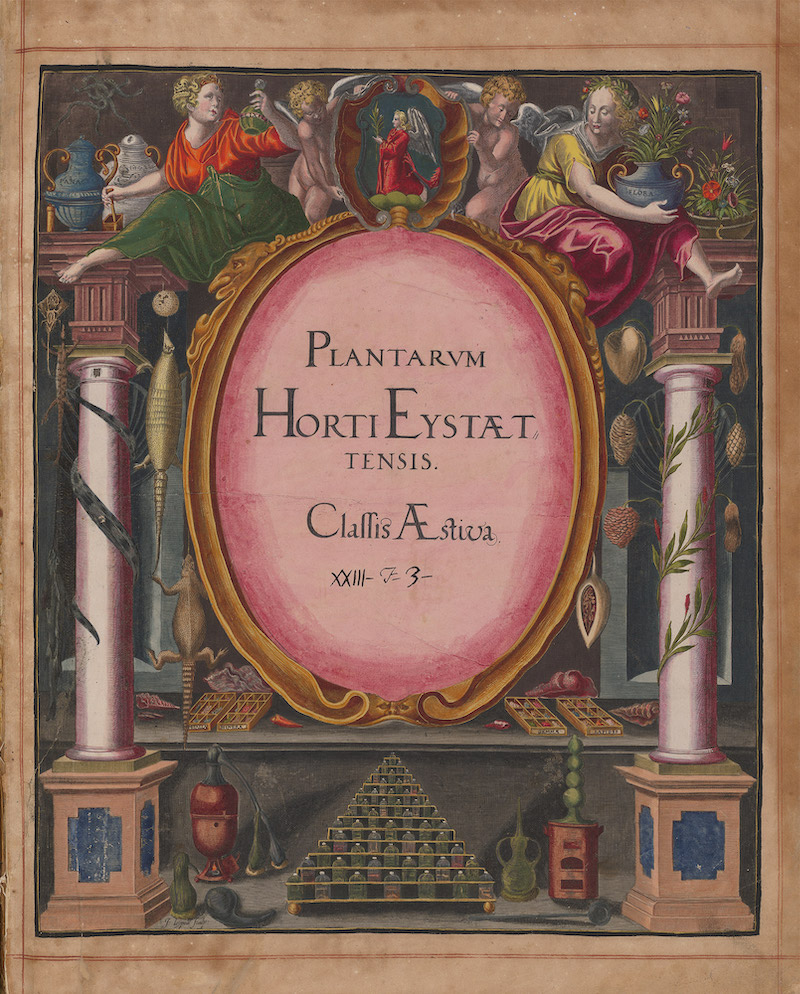
Eichstedt Gardens Brasilias. Bessler (1561-1629) Latin, German Nuremberg Original display © Apostolic Library of the Vatican
Brasilias. Bessler was a Germanic apothecary and botanist, famous for his great book "Eichstedt Garden" plant atlas. Bessler's creation of "Eichstaedt Garden" was inspired by the bishop of Bavaria (Bavaria) who he participated in the construction of. Conrad. Fan. Gemmingen (JohannKonrad von Gemmingen, 1561-1612) Inspired by the botanical garden of the Eichstätter House. This botanical garden is the only valuable botanical garden in Europe outside the territory of Italy; it surrounds the princely bishop's palace and was established in 1596 by Bessler's colleague Joachim Jr. The design of Camerarius (Joachim Camerarius the Younger, 1534-1598) began to be built, and it took 16 years to complete. Each season of the book is introduced with elegant engraved drawings, with elements of a wunderkammer in its outline, and mainly weapons of the Bessler family. The indexes of the book are in Latin and German.
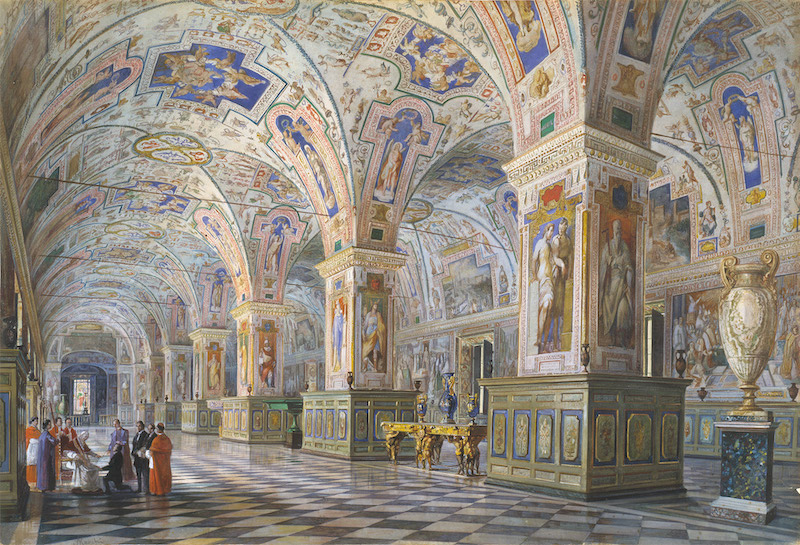
Sistine Hall View Vincenzo . Marchi (1818-1894) circa 1860 Watercolor on paper Image output © Pontifical Library of the Vatican
This work is by the painter Vincenzo. Painted by Malki around 1860. On the left is a scene where Pope Pius IX (Pius IX, reigned 1846-1878) was surrounded by cardinals and senior clergy, receiving gifts. In addition to his outstanding drawing skills, the artist's ability to bring to life the colors that adorn the image is also amazing. This painting is part of the General Drawing Collection (Fondo Disegni Generali) of the Pontifical Library. The general drawing collection assembles collections of different natures, accepts new objects from various sources, and continues to expand.
twentieth century
In the twentieth century, the Apostolic Library of the Vatican continued to expand its collections and to make itself methodically open to innovative thinking and action.
In 1902, 2,500 volumes and manuscripts in more than 20 languages were collected from the Borgia collection. Among them, the Mesoamerican Nahuatl (Nahuatl) text manuscript with collection number Borg.Mexican.1 is extremely rare, and it was made before Christopher Columbus (Christopher Columbus, 1451-1506) embarked on his voyage. In the same year, the Pontifical Library purchased a large collection of the Barberini family, including 11,000 manuscripts, family archives and 36,000 prints, including Johannes Gutenberg (Johannes Gutenberg, c1400-1468). The first printed copy produced by movable type printing - "42-line Bible (42-line Bible)". In 1921, the Apostolic Library acquired another 1,200 manuscripts and 8,000 prints collected by Giovanni Francesco de Rossi (1796-1854).
Pius XI (Pius XI, r. 1922-1939) served as Director of the Vatican Pontifical Library before becoming Pope, and his practical experience made him quite familiar with library needs. With the assistance of Director Giovanni Mercati (1866-1957) and librarian Eugène Tisserant (1884-1972), he gave birth to a particularly positive movement in the history of the Pontifical Library. new stage of development. Significant achievements include: expansion of manuscript and print collections, addition of storage space for 800,000 volumes, and construction of a new library entrance. At the same time, the relationship and close cooperation with the library community in the United States and other countries have completely updated the library's technical operations, and the Pontifical Library has also completed the compilation of a new catalog of printed books in its collection. In 1934, the Pontifical Library opened the Vatican Library School (Scuola Vaticana di Biblioteconomia); in 1937, the photography laboratory in the library was established.
The Apostolic Library of the Vatican continued to grow and develop throughout the twentieth century. Pope Paul VI (Paulus VI, r. 1963-1978) expanded the warehouse that can store more than 400,000 printed copies during his tenure; John Paul II (Ioannes Paulus II, r. 1978-2005) also built a new library The house is free, and an underground safe library is added for the manuscript collection, equipped with an advanced protection system. Due to the application of new information technology, readers have been able to consult the entire catalog of printed copies online since 1996, and the catalog of manuscripts collected by the library has also been made available online.
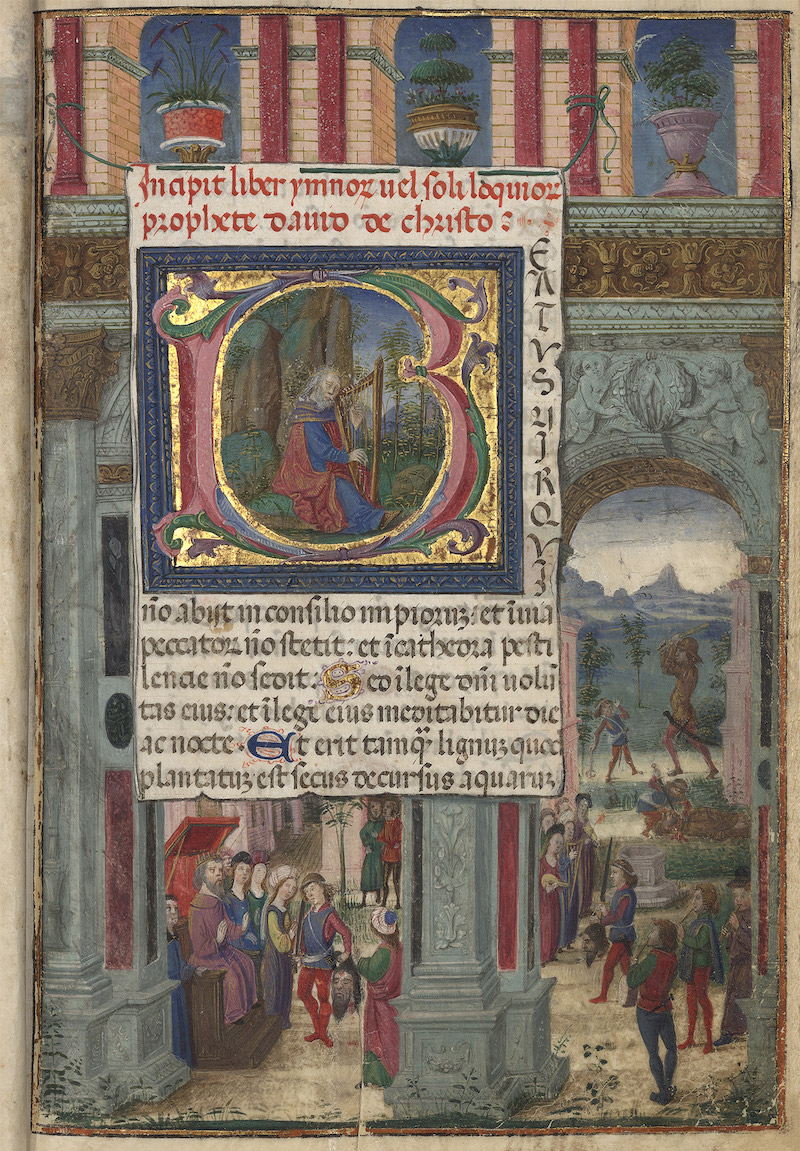
Book of Hours 1480-1490 Naples parchments Original display © Apostolic Library of Vatican
"Book of Hours" is a collection of prayers. These prayers are arranged at different times of the day according to a certain structure, including: church festivals, "Psalms", carols, litanies, Ways of the Cross, and the Passion of Christ , the Virgin Mary, the daily service sung by the dead, and the seven confessional poems. On page 1r, the initial B of the Psalter (Beatus vir) shows David playing a musical instrument, surrounded by an architectural framework in which other events from his life are shown.
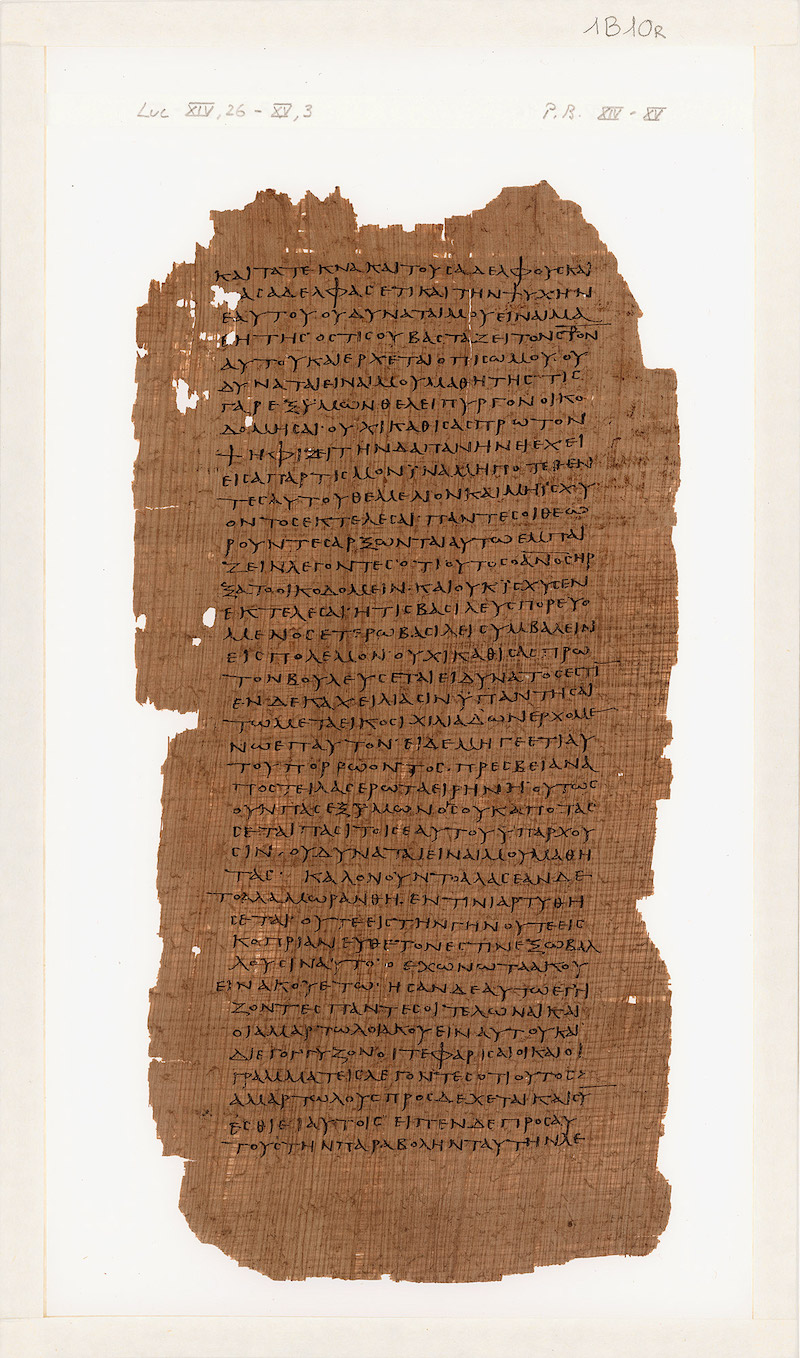
Bible Greek Papyrus of the third century Image output © Pontifical Library of the Vatican
"Hannah Papyrus I" originally included the complete Gospel of Luke and the Gospel of John. Although half of the content was lost later, it is still an important testimony of the two Gospels, and it is consistent with the fourth century Bible "Codex B (Codex B)" (Pontifical Library Collection No. Vat.gr.1209). The Hannah Papyrus I is of great historical importance as it is the oldest known copy of the two Gospels, and thus can be used to prove that the canon of the four Gospels was established at the end of the second century. The Hannah Papyrus I is also likely to be from the third century.
New buildings and technologies have not only kept the Vatican Apostolic Library up to date, but in some cases ahead of it. The digitization of the collection of manuscripts is progressing rapidly. The Vatican Digital Library has opened about 18,000 volumes of manuscripts and millions of pages for free online reading for readers' reference and research. Users can also apply the "International Image Interoperability Framework (IIIF)" technology to compare other images, make annotations, and even obtain the possibility of publishing personal research results.
This is a new way of looking at the Pontifical Library of the Vatican: while the Pontifical Library will continue to exist physically in a specific place, where readers can refer to the original documents in person, it has expanded into a "public library" accessible to people all over the world. frequently visited” virtual space.
(This article is compiled from relevant exhibition materials of the National Palace Museum in Taipei.)
